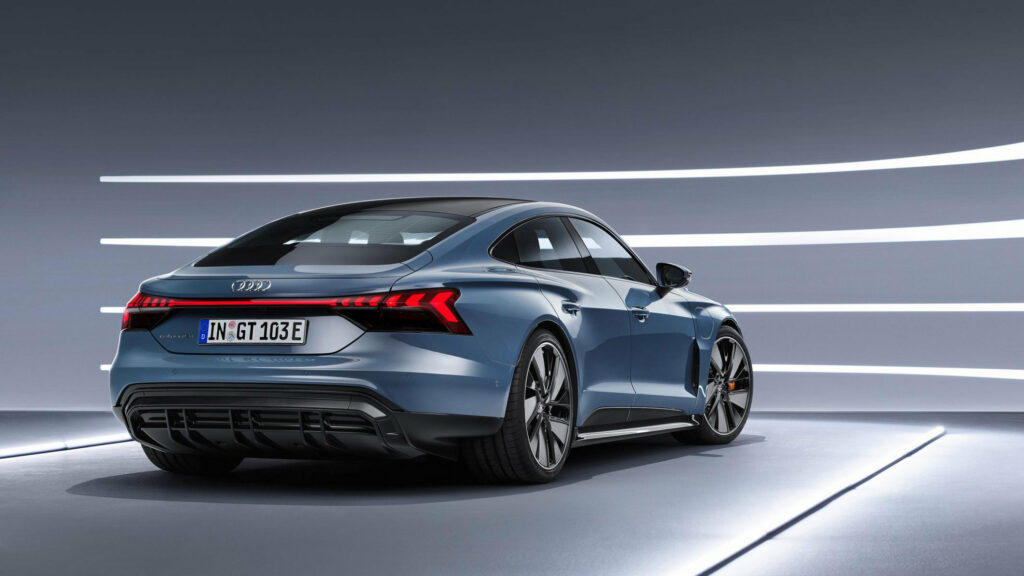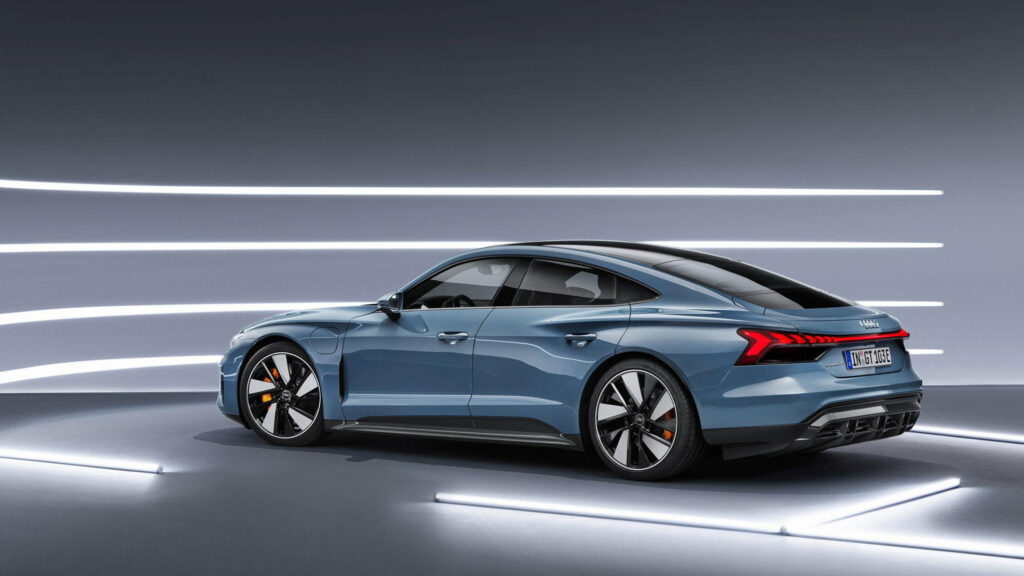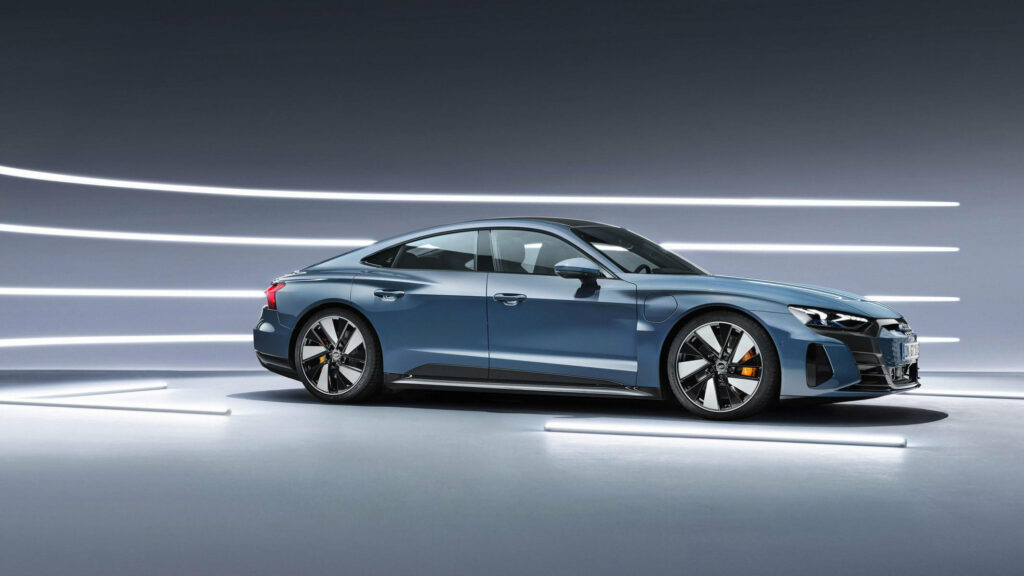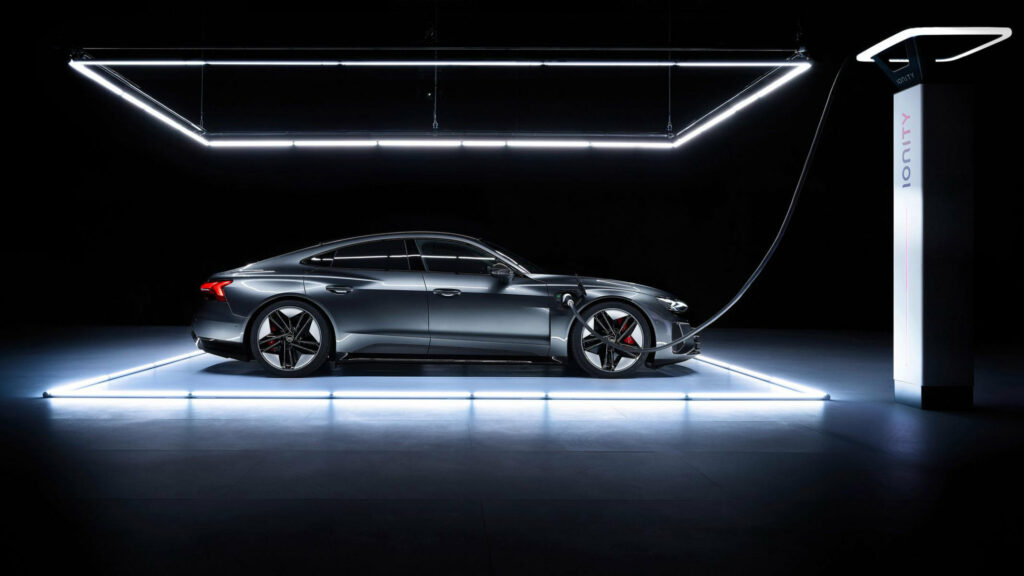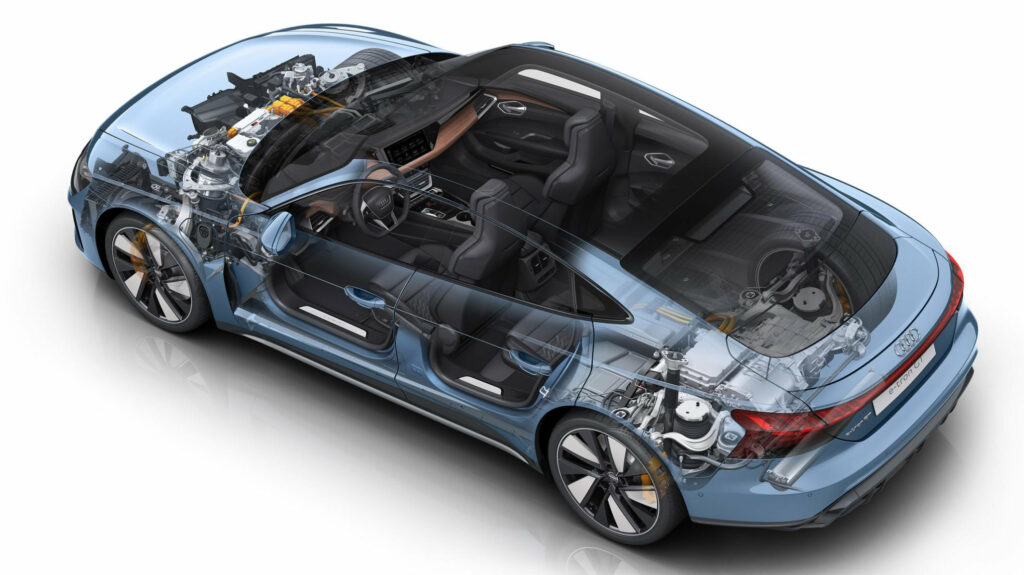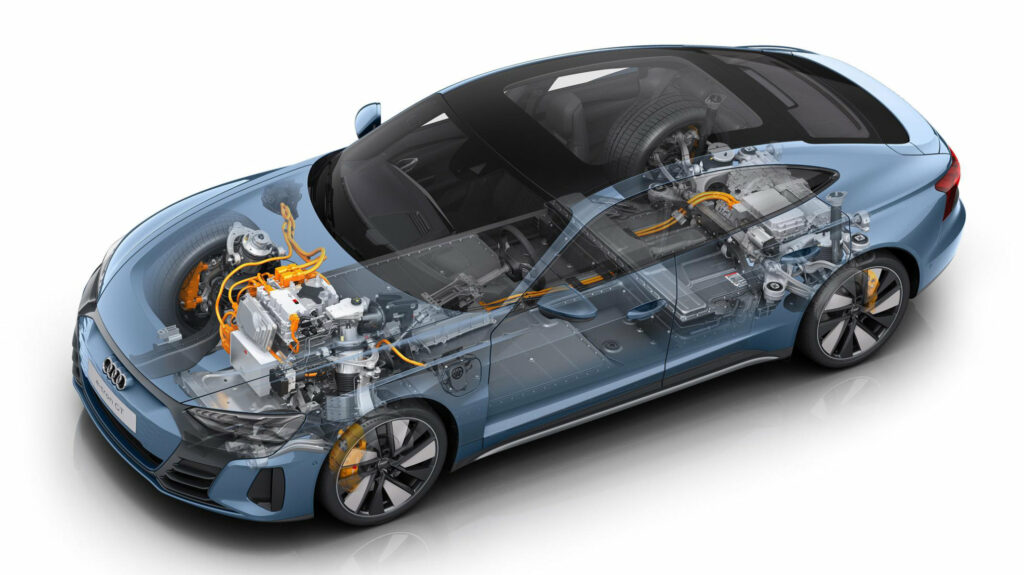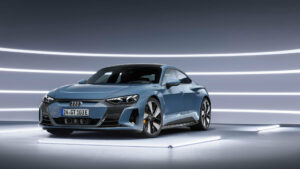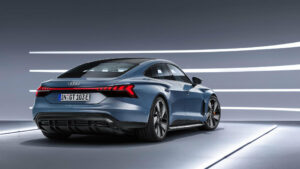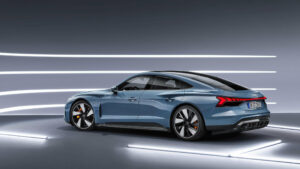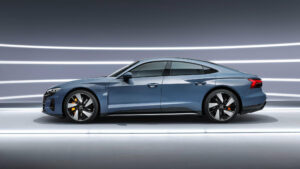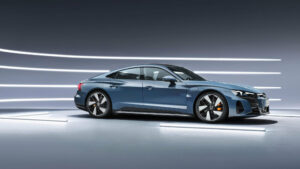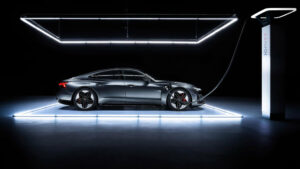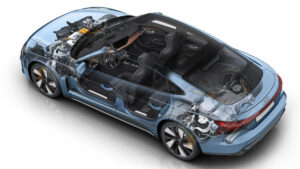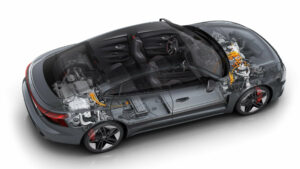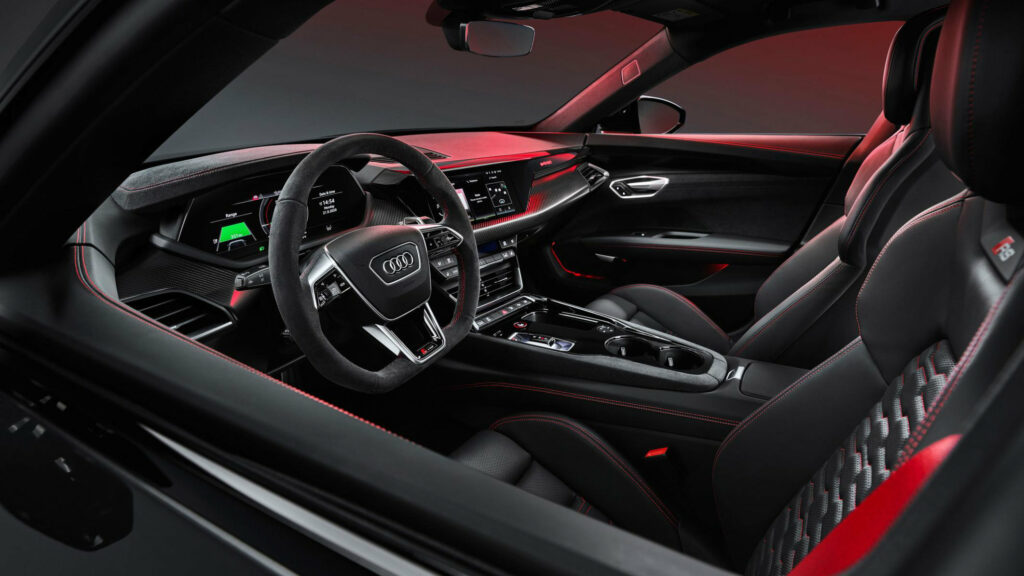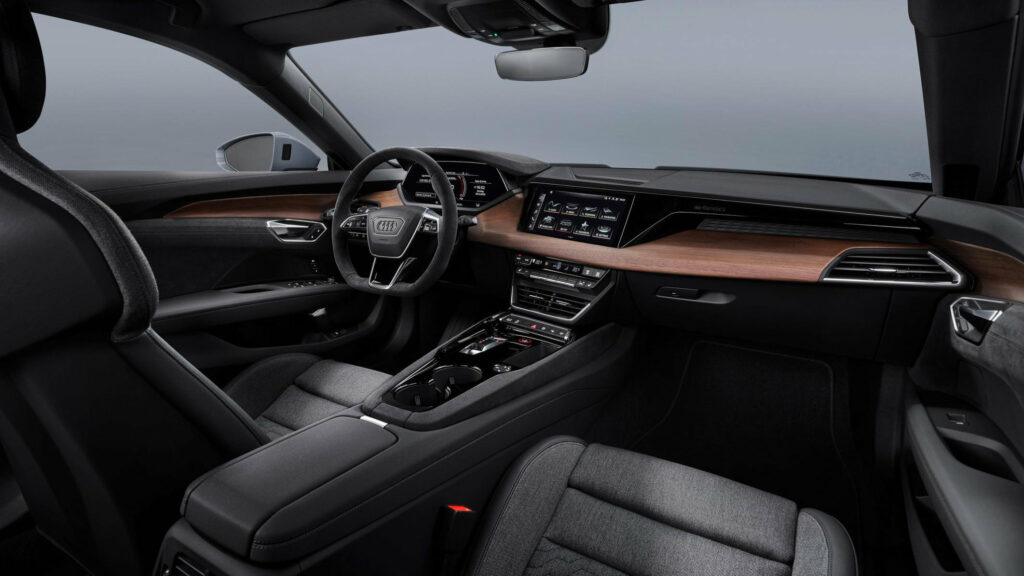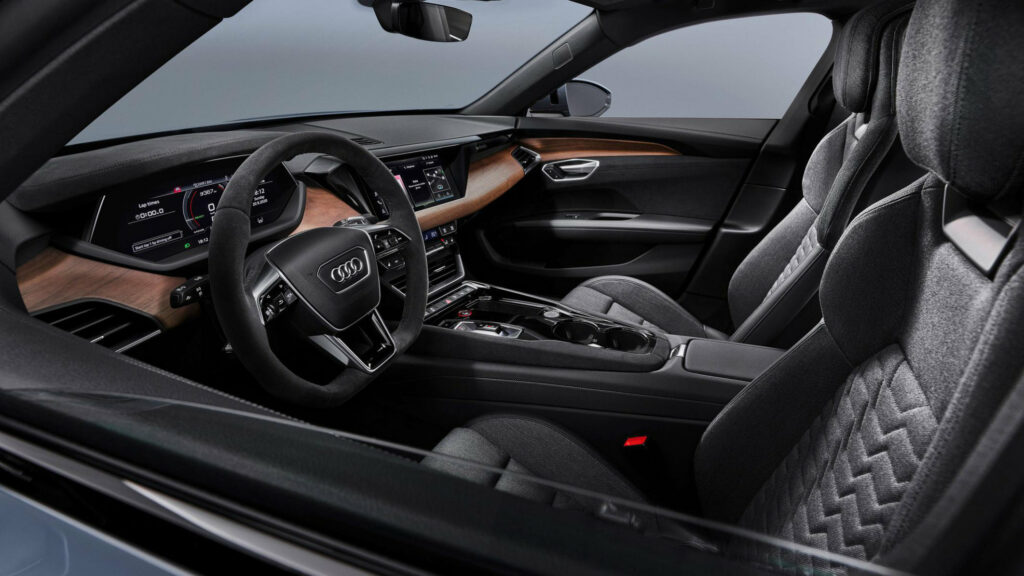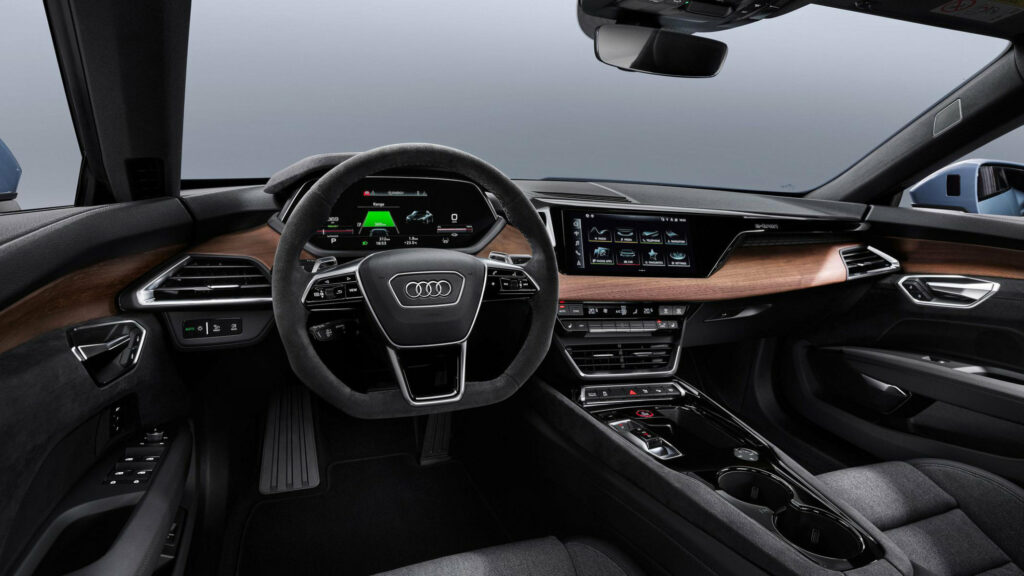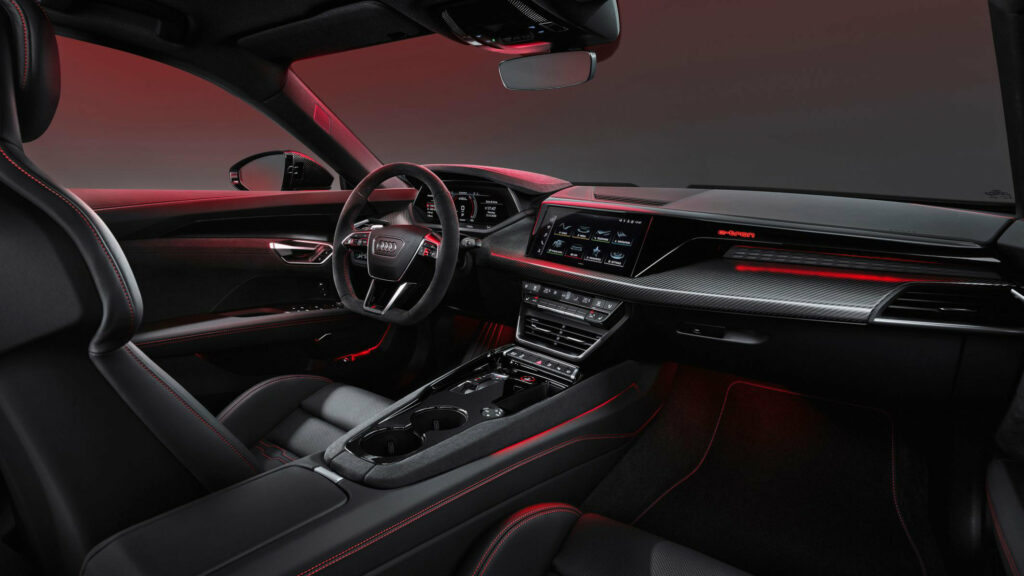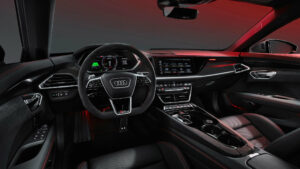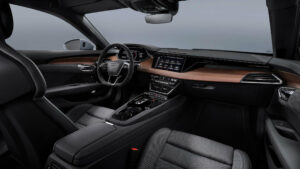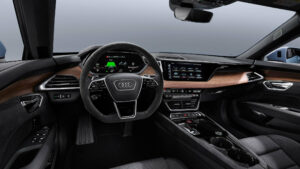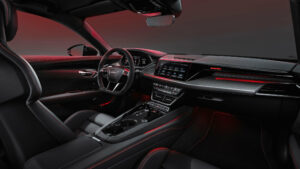Audi e-tron GT quattro
Audi unveiled the electric super-sedan e-tron GT at a special online event. The car is a production version of the concept car of the same name, which was presented in 2018 at the Los Angeles Auto Show. The novelty is called a “competitor” to the Tesla Model S and will become available for order in Europe as early as this spring. Production of the super sedan is underway at the Böllinger Höfe plant in Neckarsulm, Germany. Whether this model will be available on the Russian market is unknown.
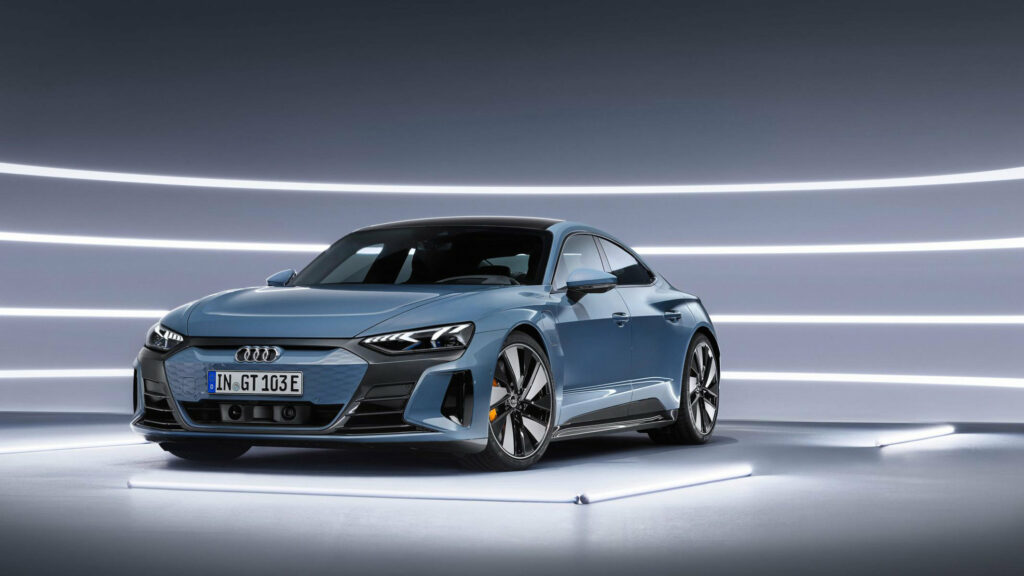
Externally, the production car is practically the same as the prototype. The car only has the usual door handles and larger side mirrors. The car has a sloping roof, wide air intakes, LED matrix headlights with graphic elements, aerodynamic body elements, and wheels with a diameter of 19, 20, or 21 inches. The aerodynamic drag coefficient is 0.24.
The cabin is equipped with a virtual dashboard, a Bang & Olufsen audio system (available as an option), a projection screen, and a large touchscreen multimedia system. The volume of the luggage compartment is 405 liters.
The novelty is built on the same platform as the electric Porsche Taycan. The car has two versions: – e-tron GT quattro and the RS e-tron GT. Both modifications are equipped with two electric motors and an all-wheel drive system. The basic e-tron GT has 476 horsepower. When Launch Control is activated, the car’s power will briefly grow up to 530 horsepower. According to preliminary calculations, the cruising range of the electric car is more than 480 km.
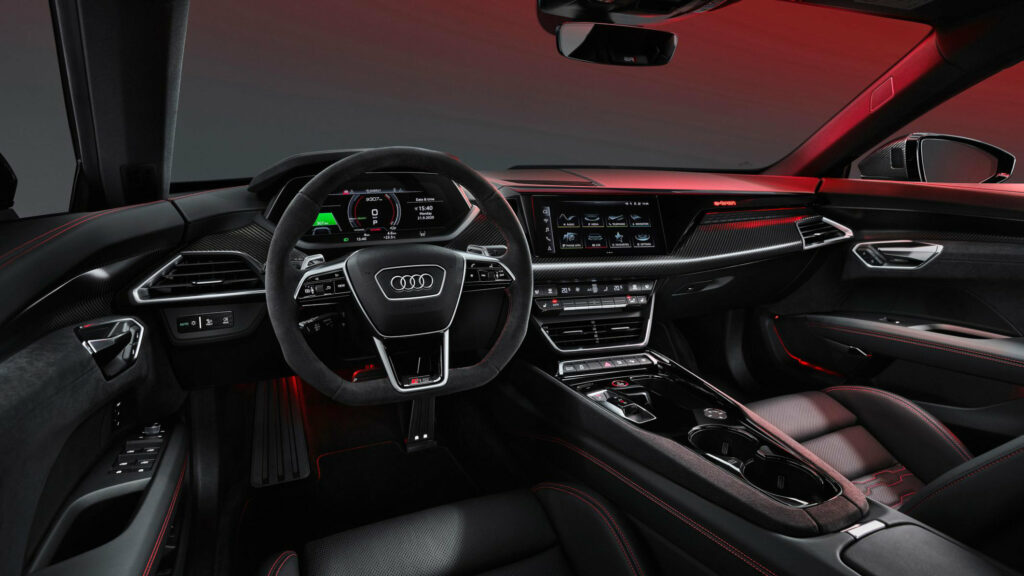
The total power of the Audi RS e-tron GT is 598 horsepower. Launch control can temporarily increase this figure to 646 hp. The car will take just over three seconds to accelerate to 100. Maximum speed is 250 km per hour.
The German electric car can be equipped with three-chamber air suspension, a full steering chassis, and, at the customer’s request, carbon ceramic brakes.
| Performance | |
| Acceleration 0 – 100 km/h | 4.1 sec |
| Top Speed | 245 km/h |
| Electric Range | 420 km |
| Total Power | 390 kW (530 PS) |
| Total Torque | 640 Nm |
| Drive | AWD |
| Battery and Charging | |
| Battery Capacity | 93.4 kWh |
| Battery Useable | 85.0 kWh |
| Europe | |
| Charge Port | Type 2 |
| Port Location | Right Side – Front |
| Port Location 2 | Left Side – Front |
| Charge Power | 11 kW AC |
| Charge Time (0->420 km) | 9h15m |
| Charge Speed | 46 km/h |
| Fastcharge Port | CCS |
| FC Port Location | Right Side – Front |
| FC Port Location 2 | – |
| Fastcharge Power (max) | 270 kW DC |
| Fastcharge Time (42->336 km) | 21 min |
| Fastcharge Speed | 840 km/h |
| Energy Consumption | |
| EVDB Real Range | |
| Range | 420 km |
| Vehicle Consumption | 202 Wh/km |
| CO2 Emissions | 0 g/km |
| Vehicle Fuel Equivalent | 2.3 l/100km |
| WLTP Ratings | |
| Range | 487 km |
| Rated Consumption | 199 Wh/km |
| Vehicle Consumption | 175 Wh/km |
| CO2 Emissions | 0 g/km |
| Rated Fuel Equivalent | 2.2 l/100km |
| Vehicle Fuel Equivalent | 2.0 l/100km |
| Dimensions and Weight | |
| Length | 4990 mm |
| Width | 1960 mm |
| Width with mirrors | 2158 mm |
| Height | 1410 mm |
| Wheelbase | 2900 mm |
| Weight Unladen (EU) | 2350 kg |
| Gross Vehicle Weight (GVWR) | 2840 kg |
| Max. Payload | 565 kg |
| Cargo Volume | 405 L |
| Cargo Volume Max | No Data |
| Cargo Volume Frunk | 85 L |
| Roof Load | 75 kg |
| Tow Hitch Possible | No |
| Towing Weight Unbraked | 0 kg |
| Towing Weight Braked | 0 kg |
| Vertical Load Max | 0 kg |
| Miscellaneous | |
| Seats | 4 people |
| Isofix | Yes, 2 seats |
| Turning Circle | No Data |
| Platform | VW J1 |
| Car Body | Sedan |
| Segment | F – Luxury |
| Roof Rails | No |
| EV Dedicated Platform | Yes |
Home and Destination Charging (0 -> 100%)
A public charging station is required to use the highest possible charging rate. The EVSE/charging station’s charging capacity affects how long it takes to fully charge the battery. The table below shows all possible options for fully charging the Audi e-tron GT quattro.
In Europe, plugging an electric car into an outlet is often as easy as plugging it into a household outlet, but there are differences from country to country. The table below shows the different ways to charge the Audi e-tron GT quattro, but in some countries some chargers may not be available.
Type 2 (Mennekes – IEC 62196)

| Charging Point | Max. Power | Power | Time | Rate |
| Standard 11.0 kW On-Board Charger | ||||
| Wall Plug (2.3 kW) | 230V / 1x10A | 2.3 kW | 43h30m | 10 km/h |
| 1-phase 16A (3.7 kW) | 230V / 1x16A | 3.7 kW | 27h15m | 15 km/h |
| 1-phase 32A (7.4 kW) | 230V / 1x32A | 7.4 kW | 13h30m | 31 km/h |
| 3-phase 16A (11 kW) | 400V / 3x16A | 11 kW | 9h15m | 45 km/h |
| 3-phase 32A (22 kW) | 400V / 3x16A | 11 kW | 9h15m | 45 km/h |
| Optional 22.0kW On-Board Charger | ||||
| Wall Plug (2.3 kW) | 230V / 1x10A | 2.3 kW | 43h30m | 10 km/h |
| 1-phase 16A (3.7 kW) | 230V / 1x16A | 3.7 kW | 27h15m | 15 km/h |
| 1-phase 32A (7.4 kW) | 230V / 1x32A | 7.4 kW | 13h30m | 31 km/h |
| 3-phase 16A (11 kW) | 400V / 3x16A | 11 kW | 9h15m | 45 km/h |
| 3-phase 32A (22 kW) | 400V / 3x32A | 22 kW | 4h45m | 88 km/h |
Fast Charging (10 -> 80%)
If you want to enjoy driving an electric car, one of the most important features to consider is the number of miles per hour the car can travel while charged. This is called the “range” of the car. All electric cars have a certain range, even if they are 100% charged. This is because they do not have an internal combustion engine to lean on if you need to drive a long distance.
Max. Power: The maximum power provided by the charging point
Avg. Power: The average power provided by the charging point during a session of 10% to 80%.
Time: the time it takes to charge from 10% to 80%
Speed: the average charging rate during the session of 10% to 80%
Combined Charging System (CCS Combo 2)
| Charging Point | Max. Power | Avg. Power | Time | Rate |
| CCS (50 kW DC) | 50 kW | 50 kW | 75 min | 230 km/h |
| CCS (100 kW DC) | 100 kW | 90 kW | 42 min | 420 km/h |
| CCS (150 kW DC) | 150 kW | 120 kW | 31 min | 560 km/h |
| CCS (175 kW DC) | 175 kW | 135 kW | 28 min | 630 km/h |
| CCS (350 kW DC) | 270 kW | 175 kW | 21 min | 840 km/h |
| Brand | Audi |
| Model | e-tron GT quattro |
| Body Style | Sedan |
| Car Engine | electric |
| Motor power | 390 |
| Maximum Torque, Nm | 640 |
| Battery Energy, kWh | 93,4 |
| Power reserve (NEDC/EPA/WLTP), km | - / - / 472 Km |
| Level Charging (230/400/DC), hours | - / 13,3 / 0,75 |
| Electrical Acceleration, 0-100 km/h (0-62.1 mph) in sec | 4.1 |
| Top Speed, km/h | 245 |

